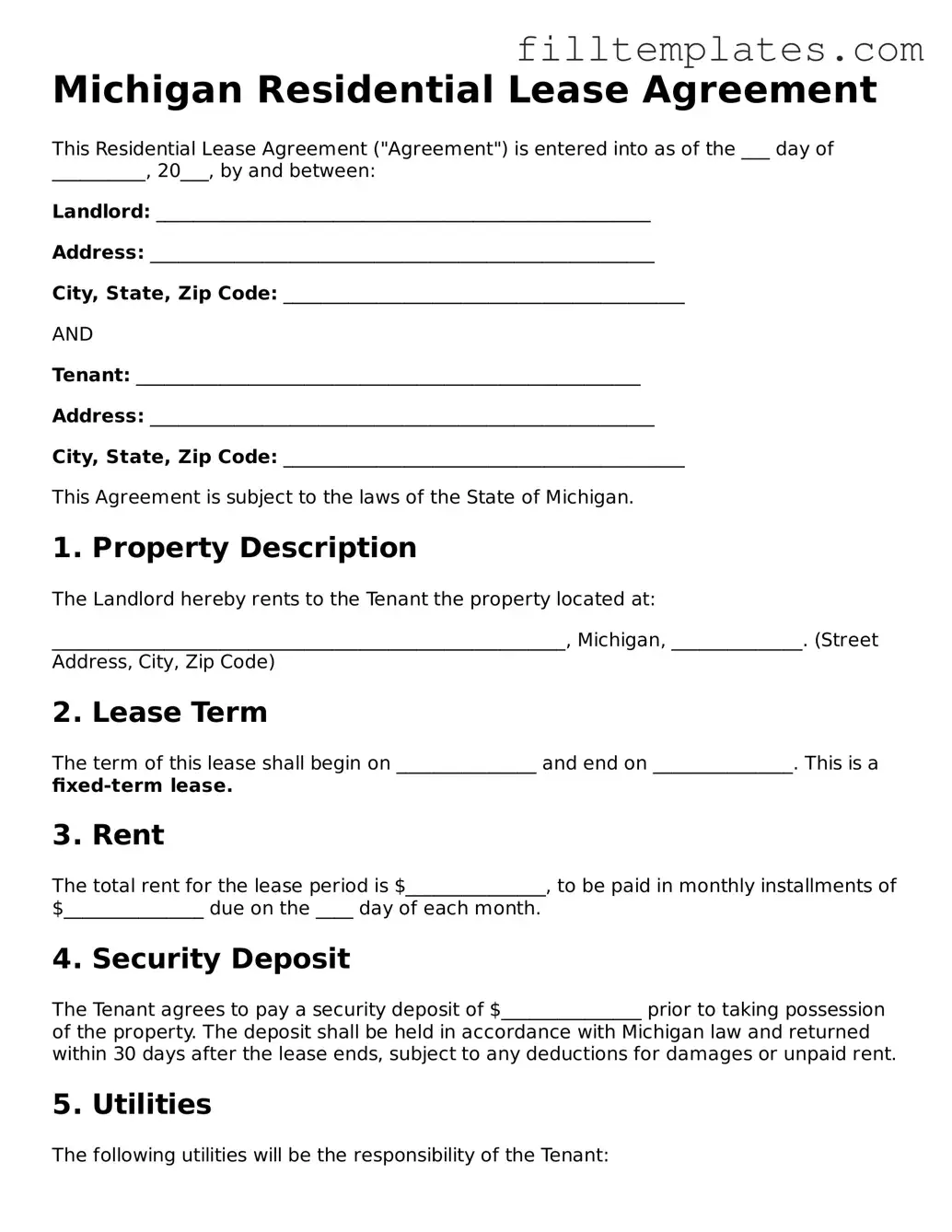Michigan Residential Lease Agreement
This Residential Lease Agreement ("Agreement") is entered into as of the ___ day of __________, 20___, by and between:
Landlord: _____________________________________________________
Address: ______________________________________________________
City, State, Zip Code: ___________________________________________
AND
Tenant: ______________________________________________________
Address: ______________________________________________________
City, State, Zip Code: ___________________________________________
This Agreement is subject to the laws of the State of Michigan.
1. Property Description
The Landlord hereby rents to the Tenant the property located at:
_______________________________________________________, Michigan, ______________. (Street Address, City, Zip Code)
2. Lease Term
The term of this lease shall begin on _______________ and end on _______________. This is a fixed-term lease.
3. Rent
The total rent for the lease period is $_______________, to be paid in monthly installments of $_______________ due on the ____ day of each month.
4. Security Deposit
The Tenant agrees to pay a security deposit of $_______________ prior to taking possession of the property. The deposit shall be held in accordance with Michigan law and returned within 30 days after the lease ends, subject to any deductions for damages or unpaid rent.
5. Utilities
The following utilities will be the responsibility of the Tenant:
- Electric
- Gas
- Water
- Sewer
- Trash Removal
The Landlord will cover the following utilities:
- ____________________________________
6. Maintenance and Repairs
The Tenant is responsible for maintaining the premises in a clean and safe condition. Any necessary repairs should be reported to the Landlord immediately.
7. Alterations
The Tenant must obtain written permission from the Landlord before making any alterations to the property.
8. Termination
Upon expiration of the lease, the Tenant shall vacate the premises unless a renewal agreement is signed by both parties.
9. Governing Law
This Agreement shall be governed by the laws of the State of Michigan. Any disputes that arise from this Agreement will be settled in accordance with Michigan law.
10. Signatures
By signing below, both parties agree to the terms and conditions set forth in this Residential Lease Agreement.
Landlord Signature: _____________________________ Date: ______________
Tenant Signature: ______________________________ Date: ______________
